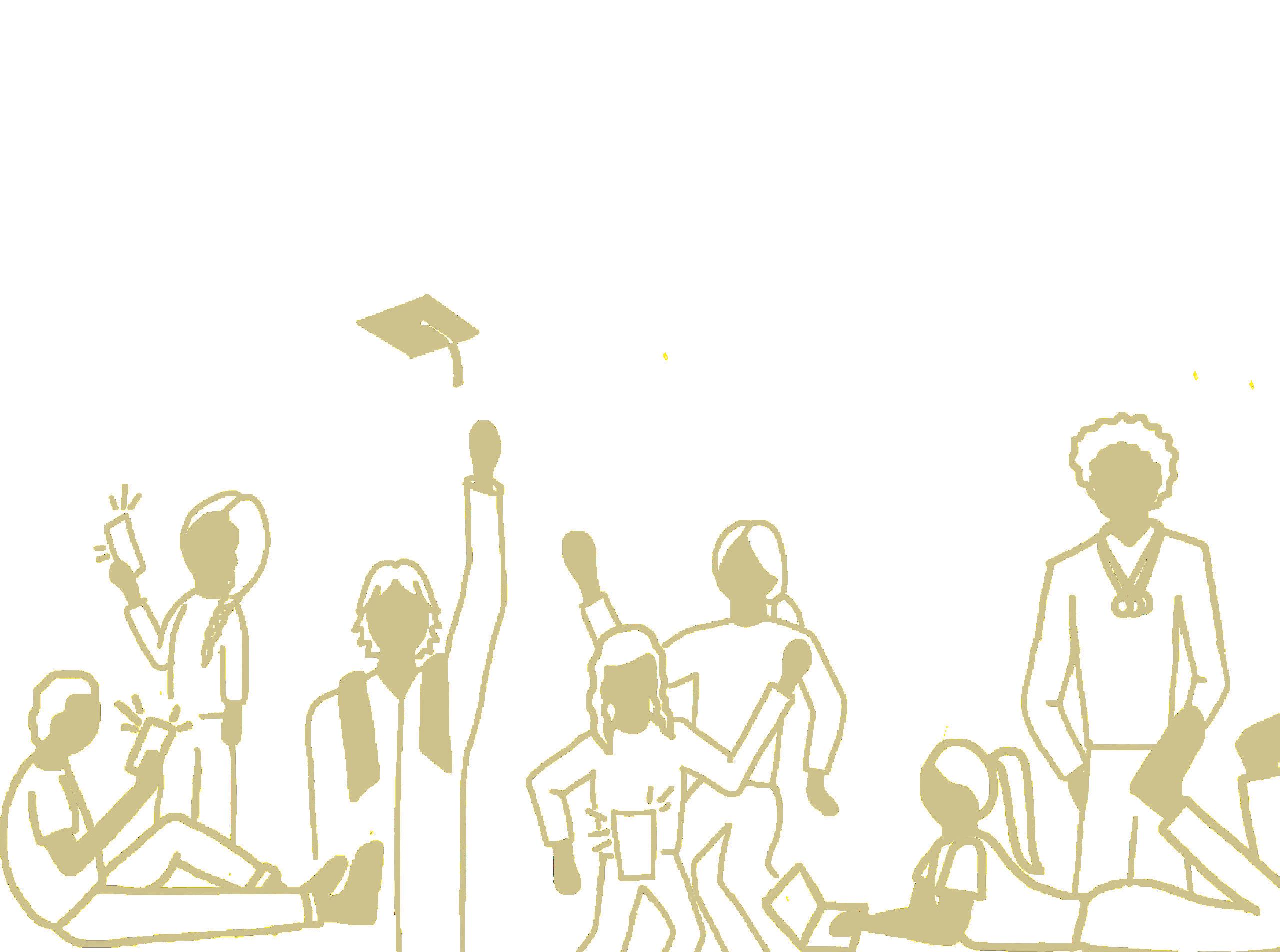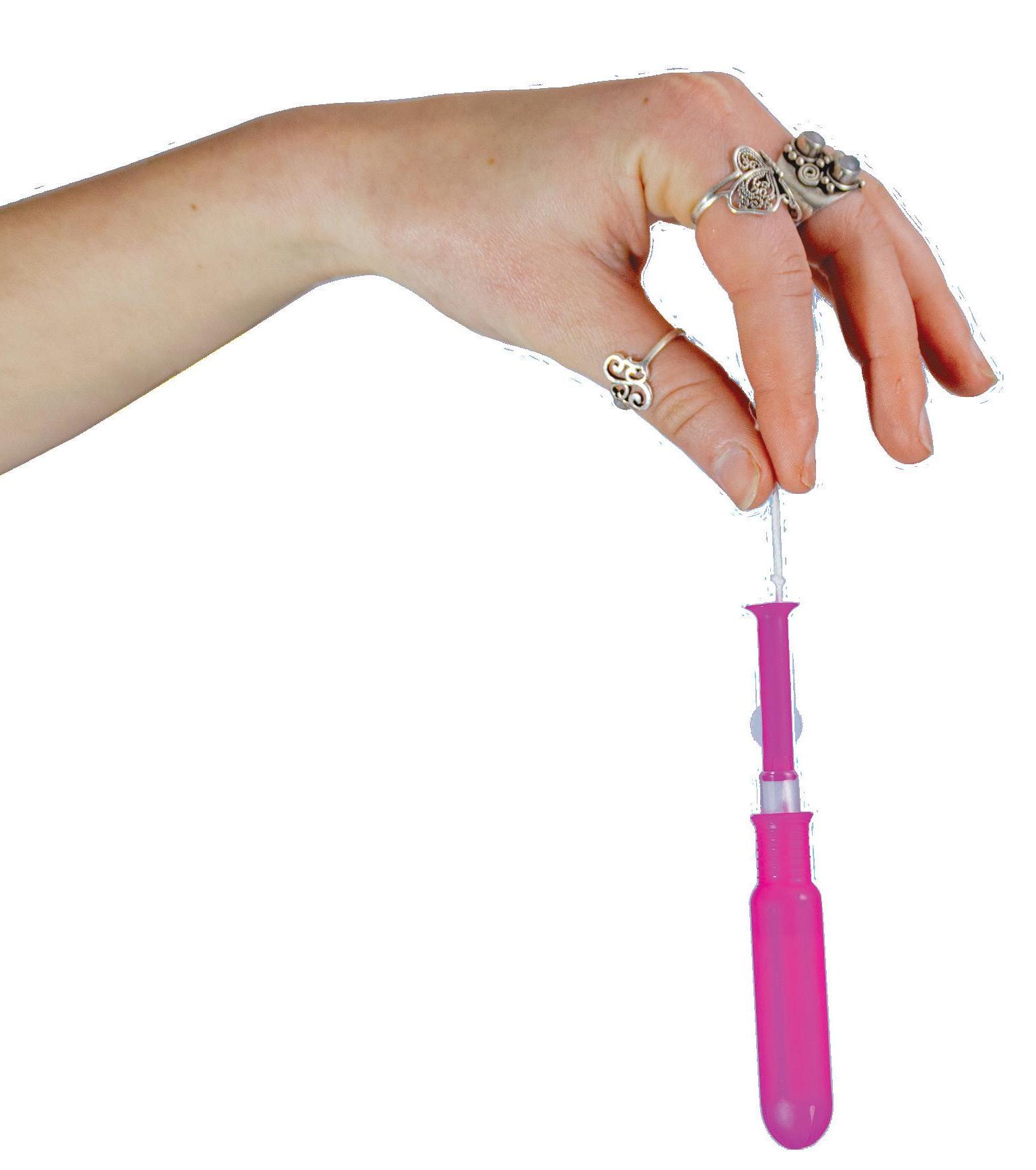
10 minute read
A Vision of Hope
Faced with impending blindness due to a rare, genetic eye disease, Willem Griffiths works against the clock to find his cure.
Written by Emily Scarvie and Lauryn Pan, Photos by Sarah Northrop
Advertisement

University of Oregon biology graduate Willem Griffiths holds up a small cut from a wafer, a semiconductive material used for manufacturing microchips. The chips are part of Griffiths’ work in a University of Oregon research project to develop a retinal eye implant that will restore vision loss— including his own.

Griffiths stands outside Willamette Hall, home to the UO Physics Department and the Fractals Research Laboratory.
As he sat at his desk in Willamette Hall, Willem Griffiths began to sweat. It was fall of 2017 and he was in his first general physics course; he sat among over 200 other wide-eyed students likely dealing with similar first-day anxieties. The room quickly hushed as a man with long, curly grey hair appeared and prepared to introduce himself. It was Richard Taylor, the head of the University of Oregon’s physics department.
Taylor, who grew up in England and who has been teaching at the university since 1999, began explaining his background, his British accent still apparent. He talked about his various research projects, including his research in nanoscience and visual art, specifically that of Jackson Pollock. But one project in particular stood out to Griffiths. It was about Taylor’s work in leading a research team to develop a retinal eye implant that actually restored vision loss.
After the class ended, Griffiths eagerly walked up to the front of the room to have a word with the man he’d heard speak only minutes earlier. The project that Taylor had just described served as a potential cure for a disease Griffiths has lived with his entire life—one that could leave him completely blind. Griffiths has Retinitis Pigmentosa (RP), a rare genetic eye disease that causes gradual vision loss and eventually leads to blindness.
“When I was first diagnosed at age 3, they didn’t know if I would be blind in a year or if I’d have some of my vision for my entire life,” Griffiths, now 24, says.
Looking at Griffiths, the disease isn’t obvious. The glasses he wears, thin black frames, look like the standard you’d see people with common visual impairments wearing. While the disease is genetic, neither of his parents have RP, but both he and his younger sister, Marley, were diagnosed at a young age. The disease begins in the outer corner of the eye, diminishing one’s peripheral vision over time and eventually causing blindness. There is no cure. Griffiths lives with this reality of his future every day. His introduction to Richard Taylor’s research into retinal eye implants made him realize he could be a part of finding his own cure.
“If Taylor hadn’t presented his research at the beginning of class I would’ve never known that opportunity was available here,” Griffiths says.
While Griffiths has always lived with the inevitability that comes with his disease, it never stopped him from dreaming about his future. As a child, growing up in Utah, he wanted to be a professional soccer player, a professional skier, and a botanist. But as he grew older, his interests shifted more in the direction of science—specifically, biology. When he first came to the University of Oregon, he joined biology professor Monte Westerfield’s lab studying Usher Syndrome, the leading cause of combined deafness and blindness. RP is what causes the blindness in people with this condition. The lab exposure allowed him, for the first time, to research his own disease through the lens of Usher Syndrome. He graduated with a degree in biology in 2018 and is set to begin his Ph.D. program this year. Learning of Taylor’s project is one factor that influenced this trajectory.
According to Taylor, once humans reach age 65, there’s a 25% chance they’ll naturally lose some or all of their vision over time. For people with RP, one of the only eye implants available is Argus II, and this is normally used for late-stage patients. This implant is surgically put in the eye, and the person must then wear glasses with a camera that sends video signals to the implant. Rather than restoring the person’s vision, the glasses supplement it with video input.
Taylor’s research project, however, aims to create an eye implant that restores the subject’s natural vision rather than supplementing it with images. The goal is also to create an implant that acts as a natural extension of the body, that the cells in the eye will interact with and attach to.
“For most of the implants, the body doesn’t respond well when you insert them in the eye, and they trigger these immune responses and reject the devices,” Taylor says. “We’re turning it completely around, so we’re fooling all of these cells into thinking our electronics are fellow cells, so not only do our devices not get rejected, but the cells actually want to come and interact.”
Griffiths’ initial interest in the project has evolved into his current role as part of the research team. In the lab, Griffiths constructs the electrodes on the implants; these electrodes are conductors through which electricity can enter and leave the eye, allowing the person to receive visual feedback. He then lowers the implant into a culture of cells in a petri dish, examines them under a microscope, and uses radiation to analyze how the cells interact with the device.


Griffiths demonstrates the different components to his research in the lab, including cutting microchips and examining how they will interact with biological tissue. The main goal is to ensure that the implant will be accepted by the body and work cooperatively with the body.
"The implants themselves will be a couple millimeters, but on them there are many electrodes, so when he’s making these electrodes, they’re well over a million times smaller than a meter,” Taylor says. “These things are all incredibly intricate.”
The project is currently in the in-vitro phase, meaning it’s still being tested in a controlled environment. However, talks of in-vivo work, or putting the implant in a human eye, in collaboration with Oregon Health and Science University, have taken place. There’s a lot of trial and error; before the team can put the device into a human eye, they have to be absolutely sure the body won’t reject it. According to Taylor, even if the project continues to be well-funded, the implant won’t be put in a human eye for 5-10 years.
This means more waiting for Griffiths, whose eyesight continues to deteriorate every day. Because of the intricacies of the lab work, he worries he may not be able to continue as his eyesight fades. Based on the tunnel vision he’s already experiencing; he may not be able to complete the complex research. This stake in the project is what motivates him to continue pushing the work in the direction it’s going.
“If you’re passionately involved in it, it becomes a lot easier, and for me personally, certainly at times when I’m thinking about why the project is so difficult, I just have to look at Willem and I think, ‘Oh, well, the reason why it’s difficult is because we’re doing this amazing thing, we’re trying to figure out how to restore vision for somebody.’ And nobody expects that to be a trivial weekend project,” Taylor says.
Despite the unpredictability of when the project will be finalized, Griffiths continues to lead an active lifestyle— one that includes skiing, camping, cycling, and the occasional tripping over a wet floor sign, he often jokes.

Griffiths constructs electrodes on the implants, which are conductors for electricity to pass to and from an eye, turning external stimuli into visual feedback.
Griffiths spends many winter weekends at Mount Bachelor, skiing various runs with his friends and doing the occasional freestyle aerial, something you might not expect given his visual limitations. But every year, in the spring, Griffiths’ father, John, comes out from Utah to join his son and his friends for the closing weekend.
For Griffiths, the morning is the perfect time to ski, as it provides bright light that reflects off the snow. This means they’re often heading up the mountain early.
“I used to ski race growing up and then went into freestyle aerials, but because of my eye condition I always had trouble spotting the landing,” Griffiths says. “It’s funny because with skiing you need a lot of visual input, especially when getting in the air, but I think I’ve found ways to figure it out for now.”
Skiing and being outdoors have long been something Griffiths values. As a child, he often went camping with his parents and Marley in southern Utah. It’s special moments like these that make him worry about what his future may hold.
“Having the world be dark all the time and not being able to see or appreciate the things I do right now, or not having the capacity to achieve all the things I’m passionate about right now, is the scariest thing,” Griffiths says. “I don’t know anybody who wouldn’t be afraid of going blind.”
Growing up, Griffiths always had his sister to count on for support. Whether it be missing someone’s handshake in a professional setting or having to talk down an annoyed bystander he’s accidentally bumped into, he’s has had to deal with more than just tripping over wet floor signs. The struggles he faces are things Marley also deals with and understands.
“We really have this deep bond because we’re similar people and we both have this condition,” Marley, 22, says. “We’re the only ones who understand what we go through.”
This bond has helped Willem and Marley stay positive in times of doubt. Along with the support of friends, they remind each other that they can laugh at themselves.
“I love hearing silly, or what others perceive as silly, stories about what happens to my sister when she goes out and about and she can’t see,” Griffiths says. “It makes me feel better that someone is experiencing the same thing too.”
He also realizes that the research he’s doing is not only imperative for his future, but for his sister and others with the disease. This makes it that much more important to him, and the team working on the project. To have a member of the team with such a personal stake in the research is a constant reminder that the work they are doing is vital. How and when the project is finished will likely determine the fate of his eyesight.
“He reminds me why we’re doing this all along, so he serves that sort of purpose as well. He’s just a very inspiring and energetic person to have around,” Taylor says. “I consider myself very lucky that I’ve bumped into him.”
In the meantime, Griffiths continues to pursue this potential cure, both for himself and anyone else with visual impairments. He continues to live his life the way he always has, and he’s never been one to let the disease hold him back.
“Although I am faced with this fate, I’m not always behaving accordingly,” Griffiths says. “If it’s not in my control, why should I be letting it control me.”

Though it’s not certain when Griffiths’ eyesight will fully deteriorate, he leads an active life. When not in the lab, he enjoys cycling and skiing, which have become second nature despite his visual limitations.










